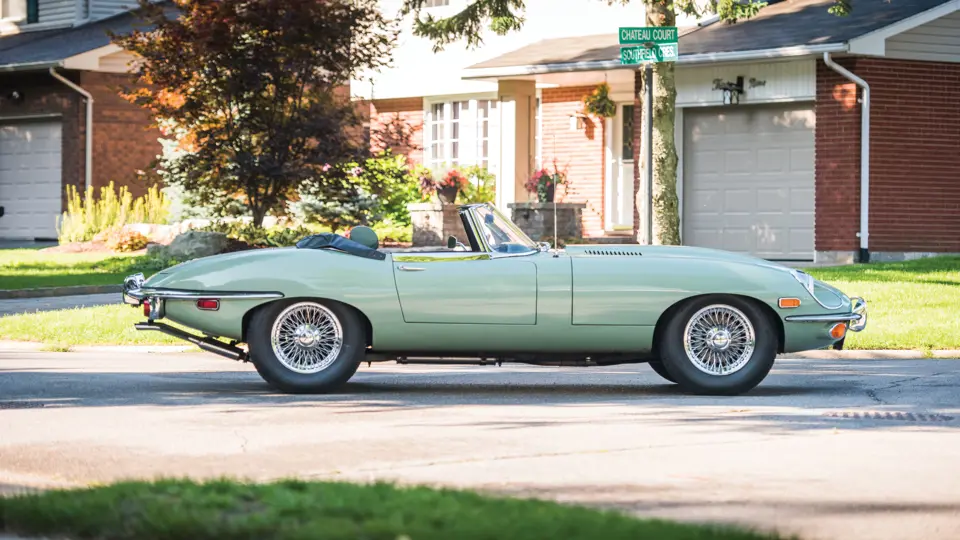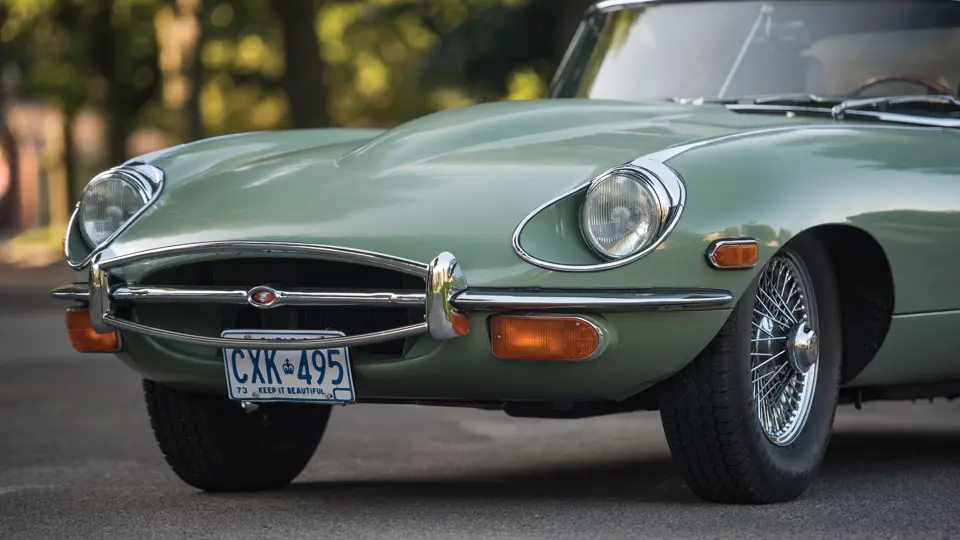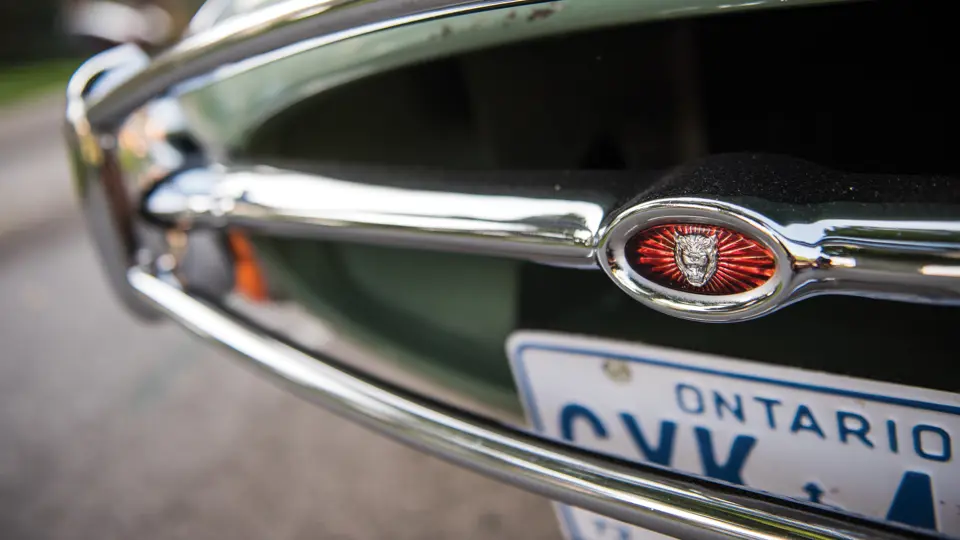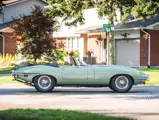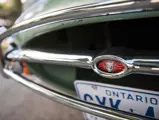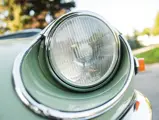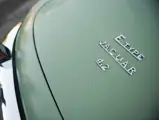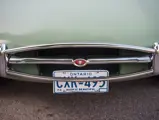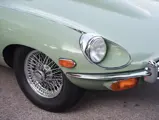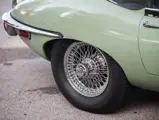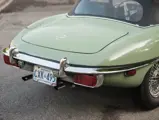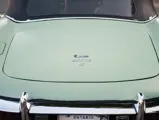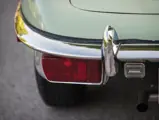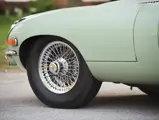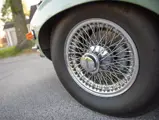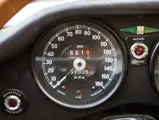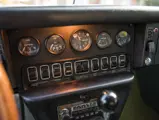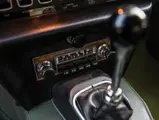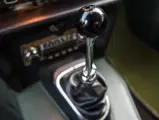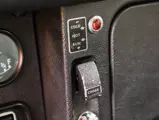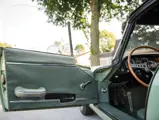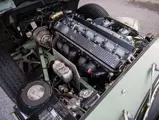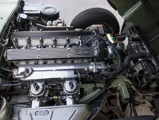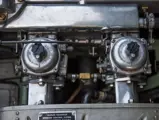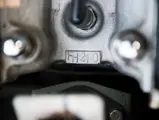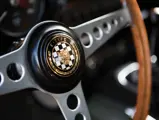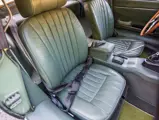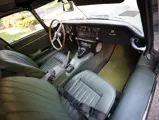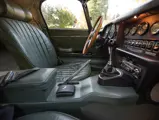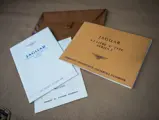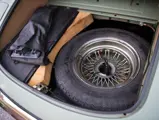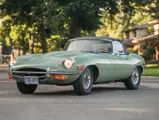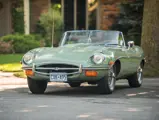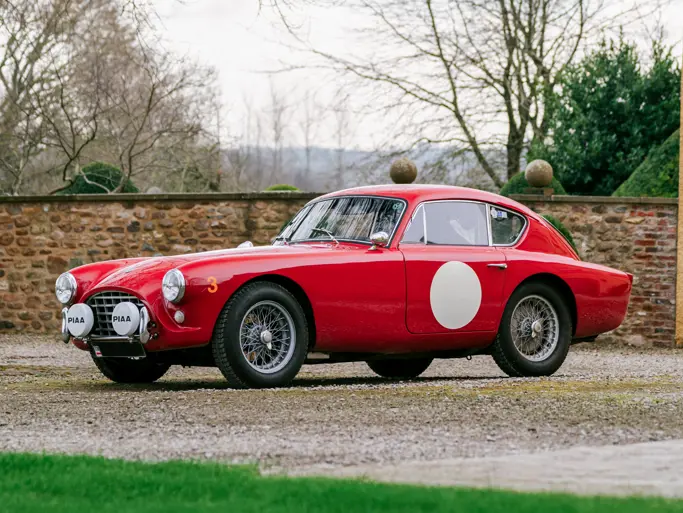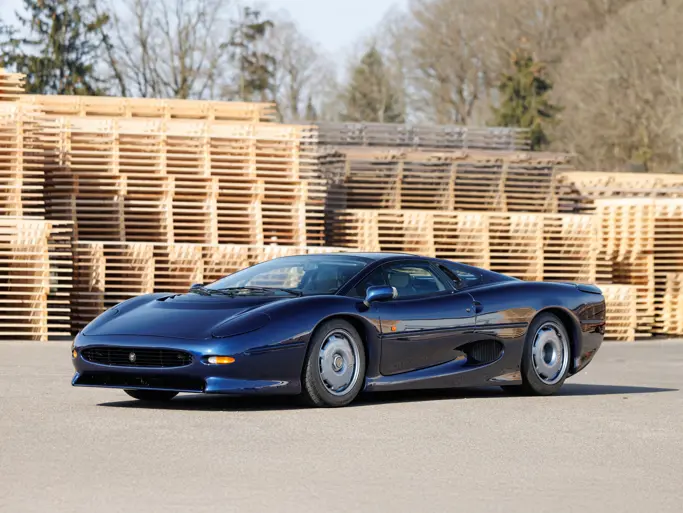246 bhp, 4,235 cc DOHC inline six-cylinder engine with dual Zenith-Stromberg carburetors, four-speed manual transmission, independent front torsion-bar suspension, independent rear coil-spring suspension, and four-wheel hydraulic disc brakes. Wheelbase: 96 in.
One of the most alluring cars ever built, the Jaguar E-Type, or XK-E as it was called in the United States, instantly turned heads when it was introduced in 1961. British mathematician and aerodynamics expert Malcolm Sayer—known as “the man behind the curves”—designed the E-Type as a derivative of the Jaguar D-Type racing car he created, which won the 24 Hours of Le Mans for three consecutive years, 1955–1957. Sayer had worked in the aircraft industry and brought his skills and lightweight construction method to bear in creating an agile sports car so striking that it has been exhibited at New York’s Museum of Modern Art. The car combined a racing pedigree, revolutionary styling, and Jaguar élan to claim its space on the road.
In its 14-year history (1961–1975), the E-Type underwent three production versions. The Series 2 (1968–1971), of which 8,627 roadsters were produced, marked the first major revisions of the car since its introduction, largely due to U.S. regulations. Changes included higher and uncovered headlights, a larger air intake on the bonnet, an upgraded cooling system, and better brakes. Other modifications included repositioned and larger front signal indicators, a wraparound rear bumper, and taillights below the bumper. The interior and instrument panel were also redesigned: dashboard switches were repositioned, rocker switches were substituted for toggles, the steering column was made collapsible, and new seats incorporated headrests, all resulting in a more user-friendly vehicle.
This 4.2-Litre Roadster is a veritable well-preserved time capsule. The current owner, only the second in the car’s 47-year history, purchased the Jaguar in 1972 from Leavens Jaguar in London, Ontario, Canada. The car had been imported new from England to Leavens some time in 1968. The original owner, a Dr. Calhoun, put just 14,000 miles on the car. The odometer today shows 57,292 miles, averaging fewer than 1,200 miles annually. According to the owner, all is original—including wire wheels with knock-off caps—except for tires and upgraded headlights. The car still wears its authentic Jaguar Willow Green finish complemented with dark green leather seats, and a black manual roadster top with a clear rear window. Under the current owner, the roadster has been garaged every winter since acquisition and has been maintained exclusively at Jaguar facilities—comprehensive service receipts and documentation accompany the car, as do a jack, wrench, and the original spare tire. This E-Type was proudly displayed several times at the annual Steve Plunkett Fleetwood Country Cruize-In in London, Ontario.
To anyone for whom the automobile is about the romance of the road combined with a love of enduring design, this Jaguar E-Type is a fine example of a car that ranks among the most important designs ever created.




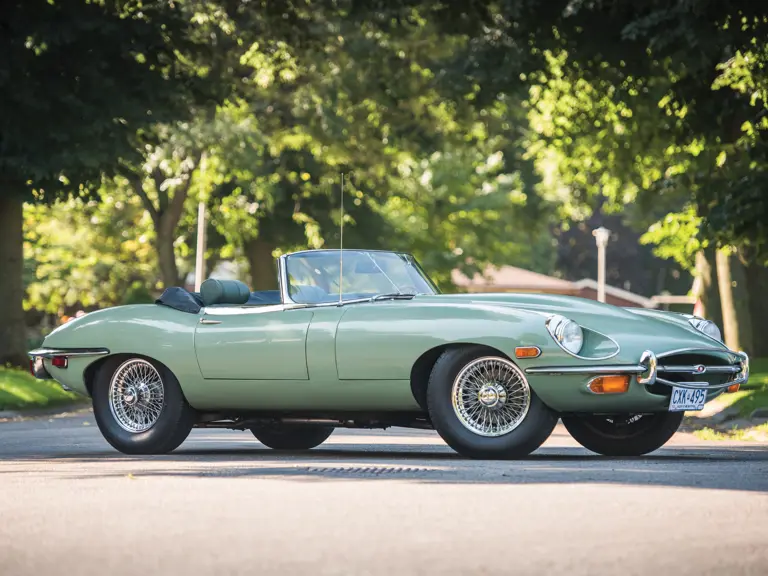
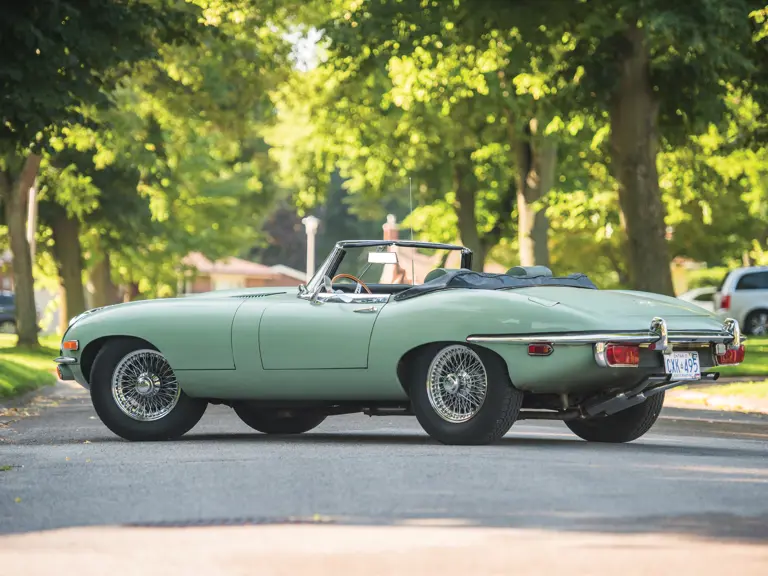
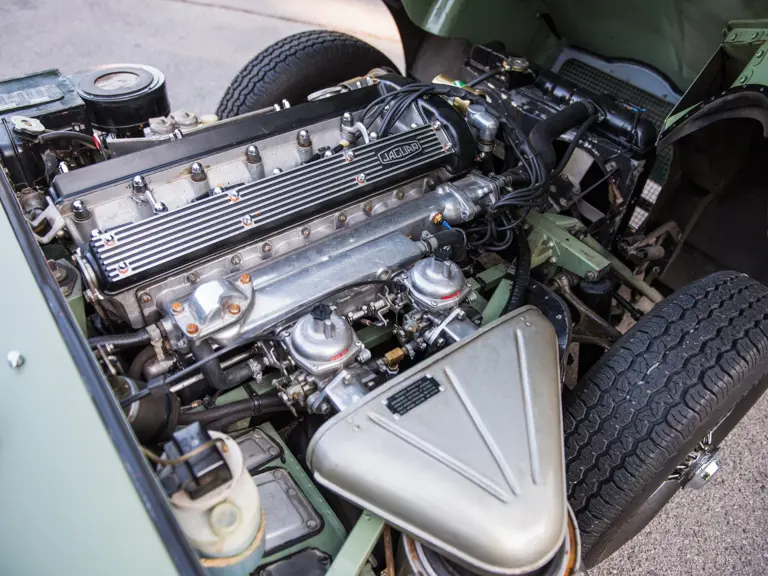
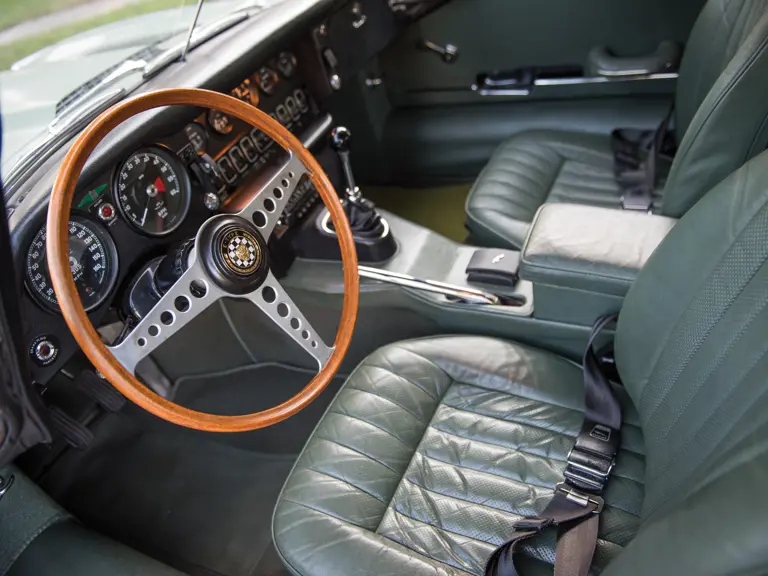




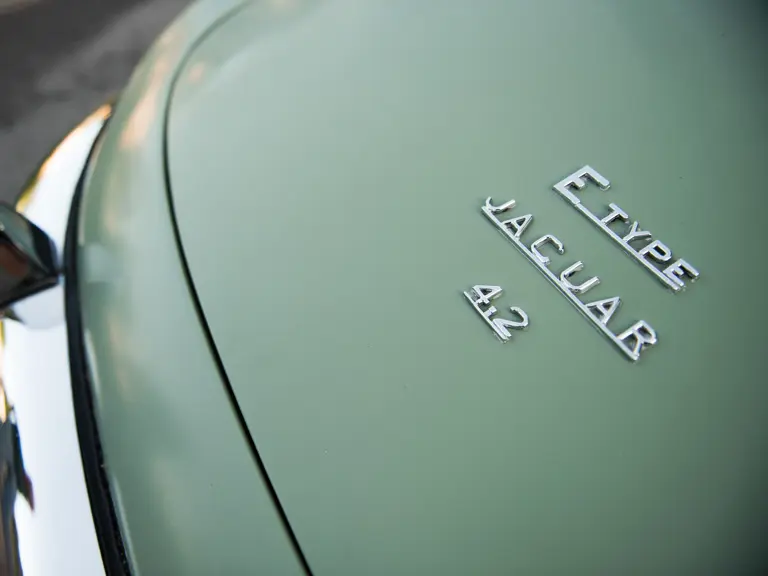
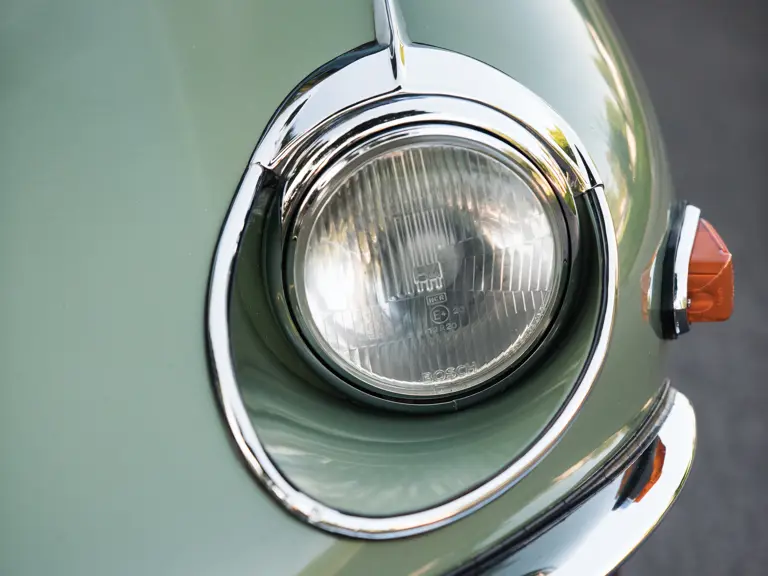
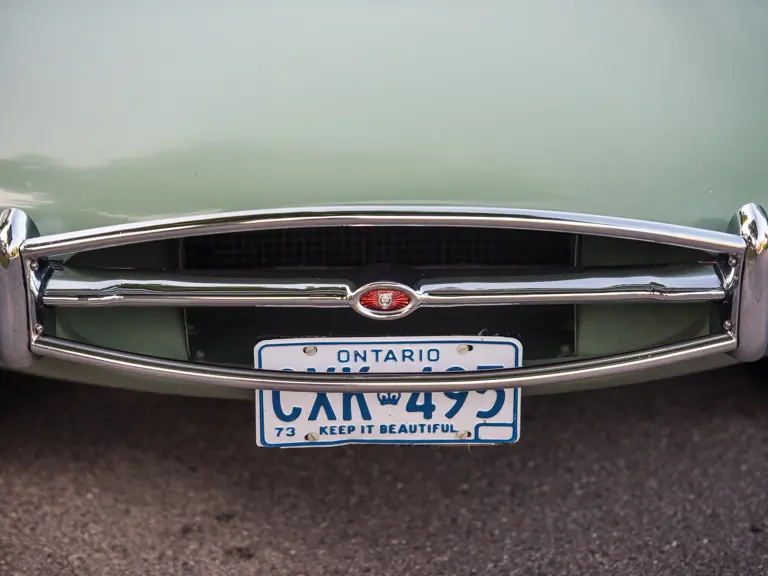
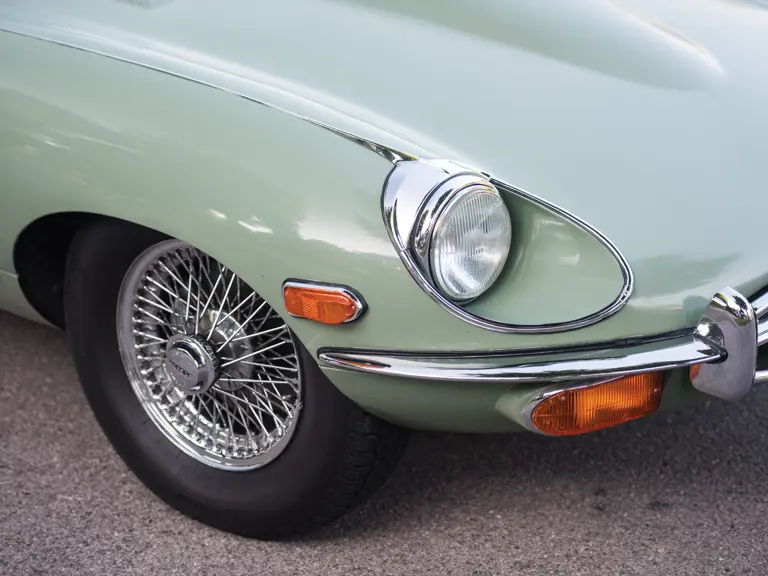
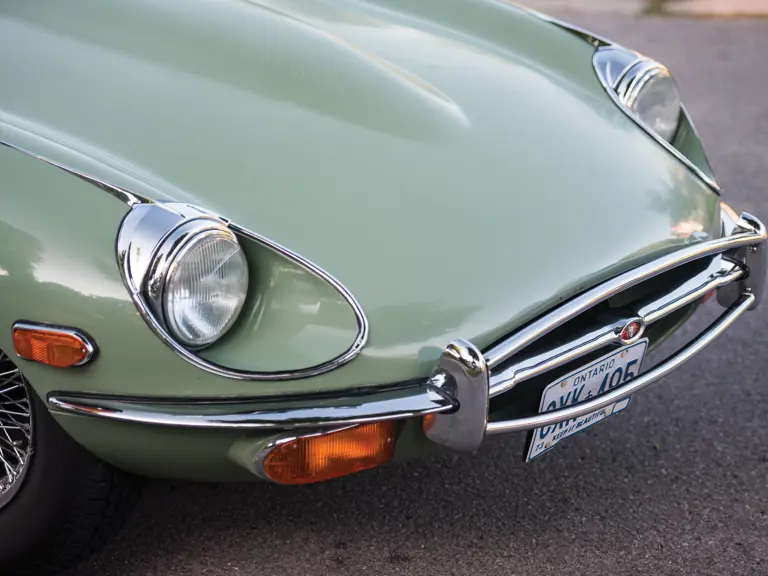

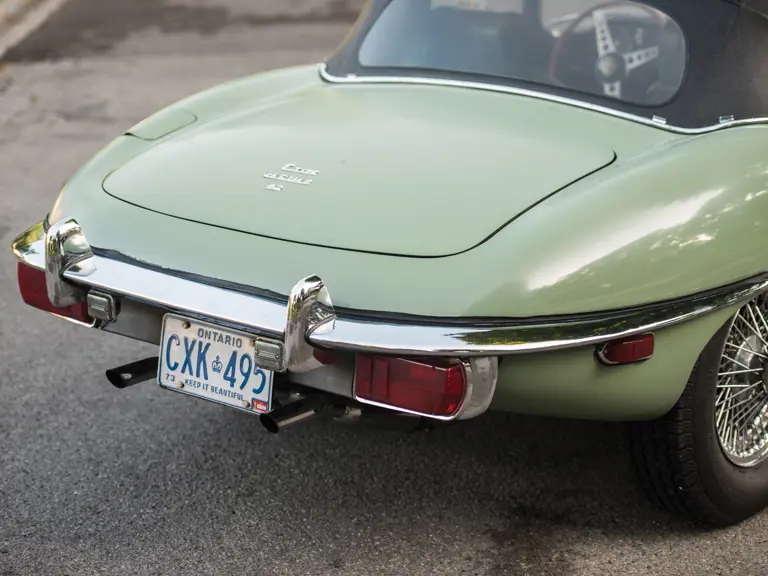

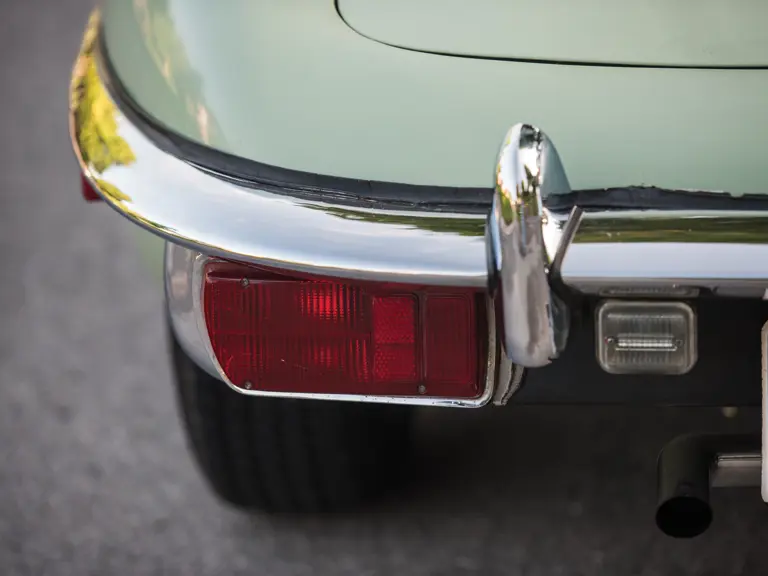
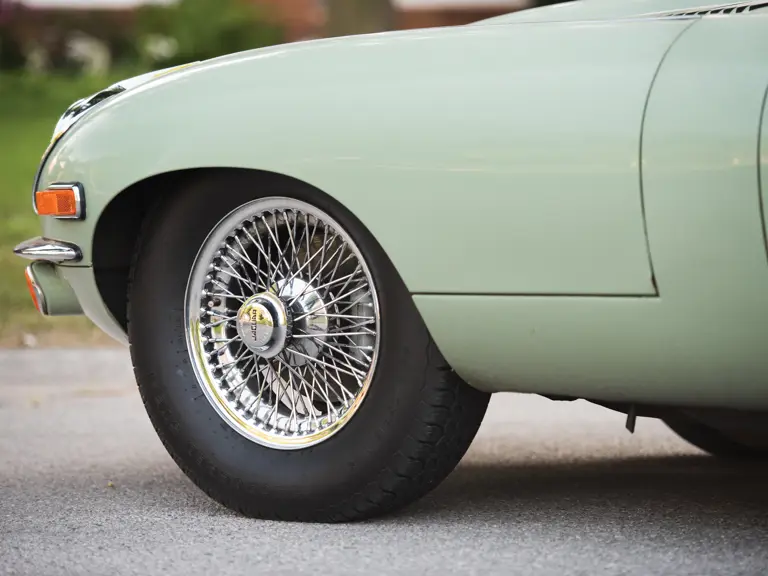
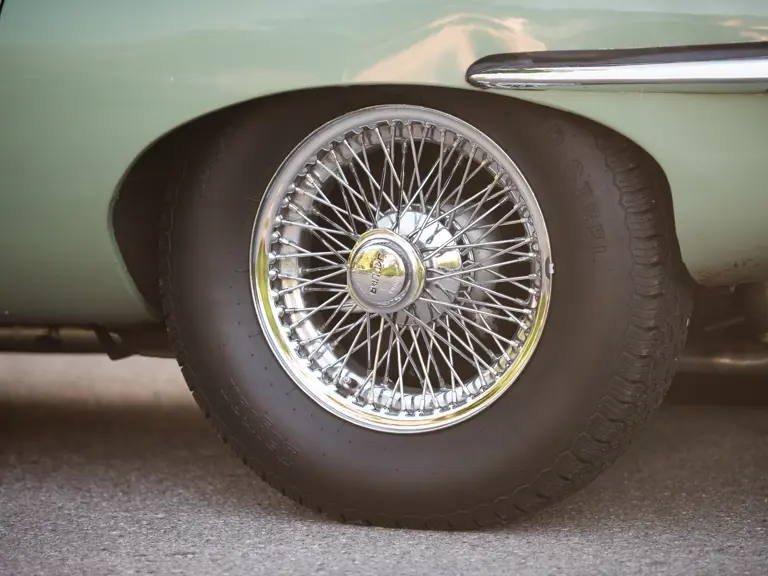
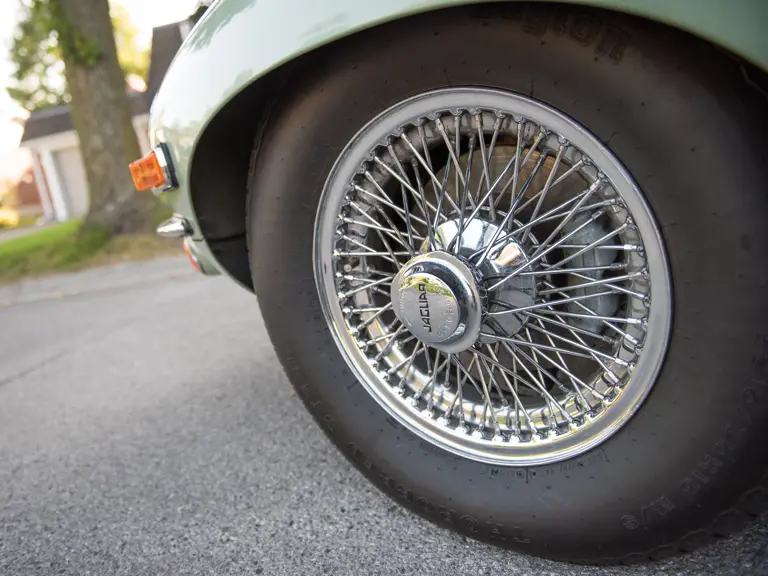
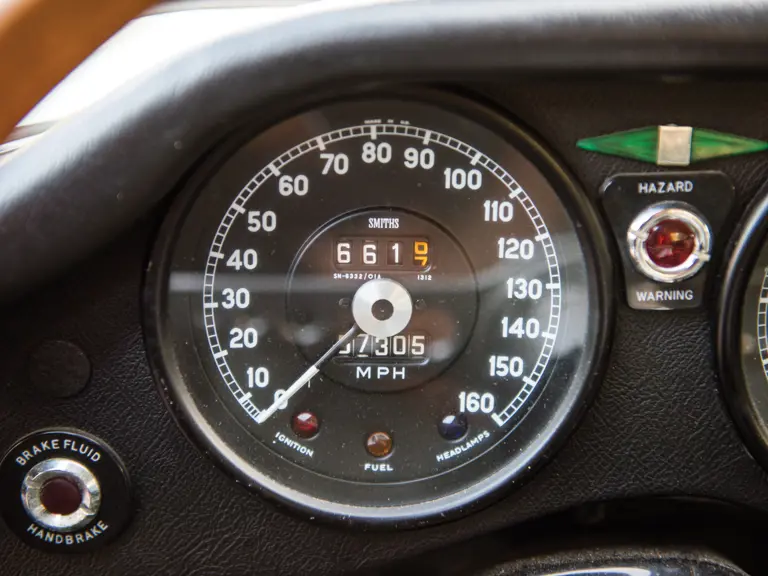
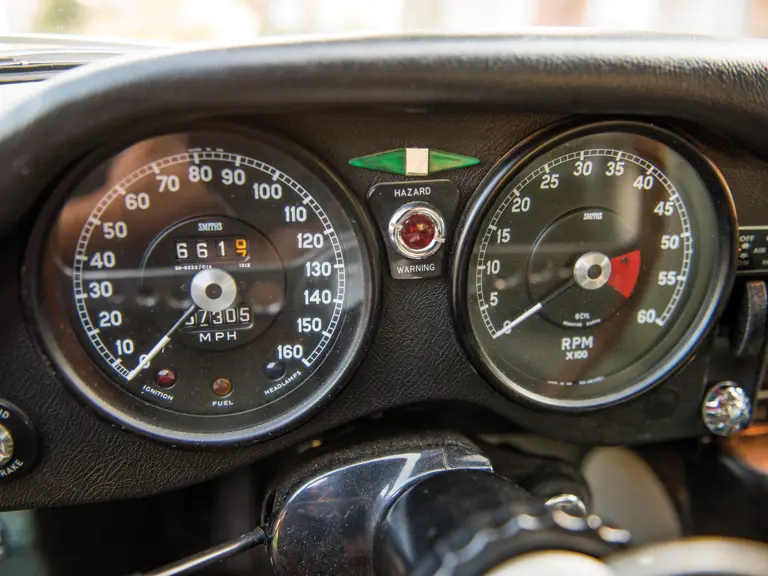

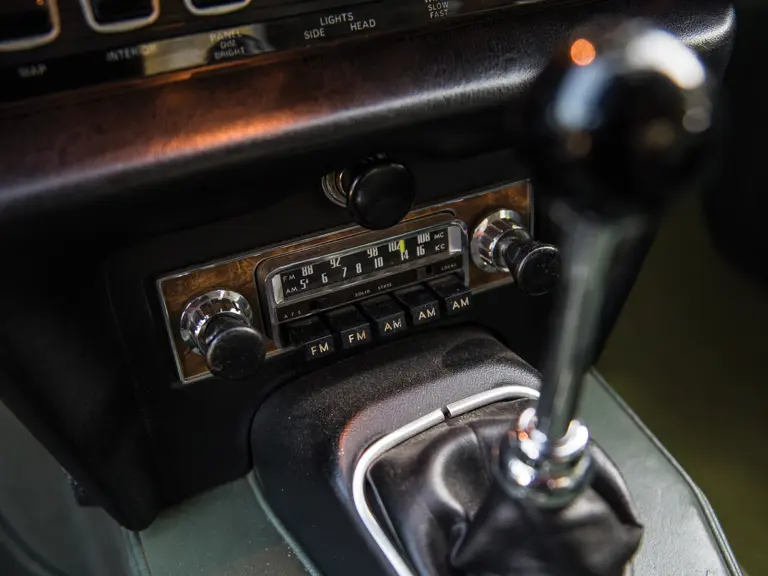

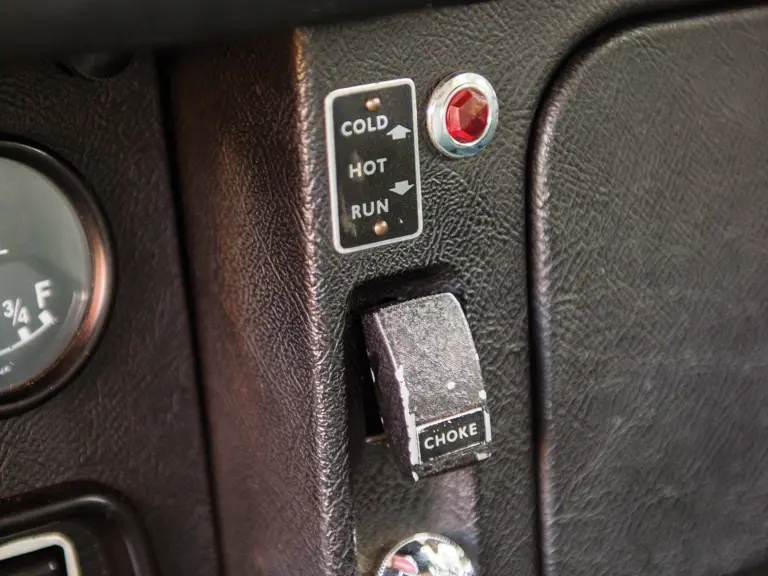
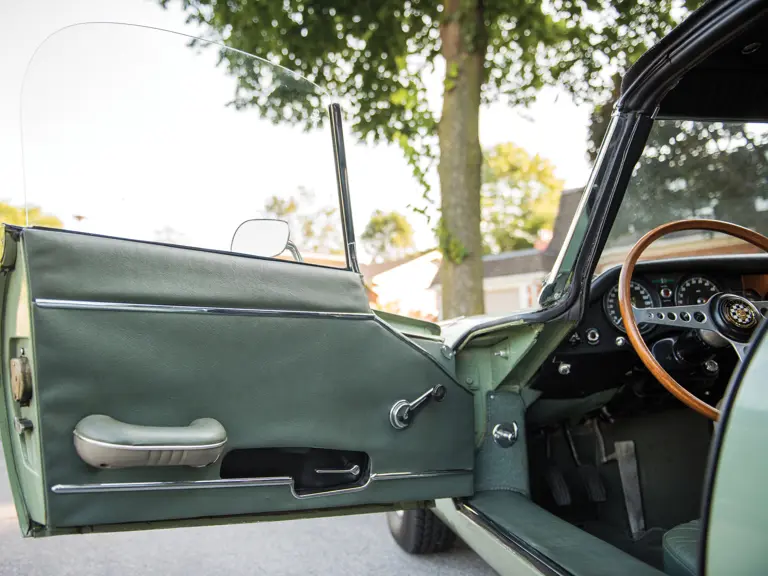
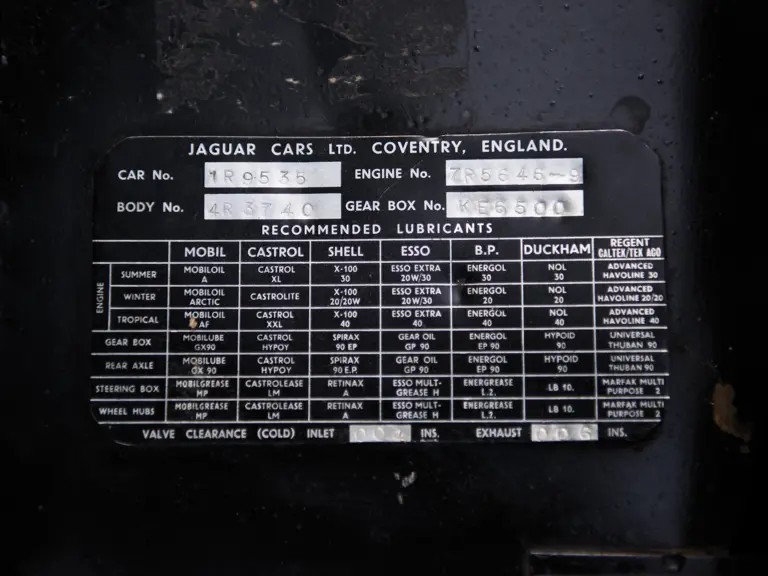
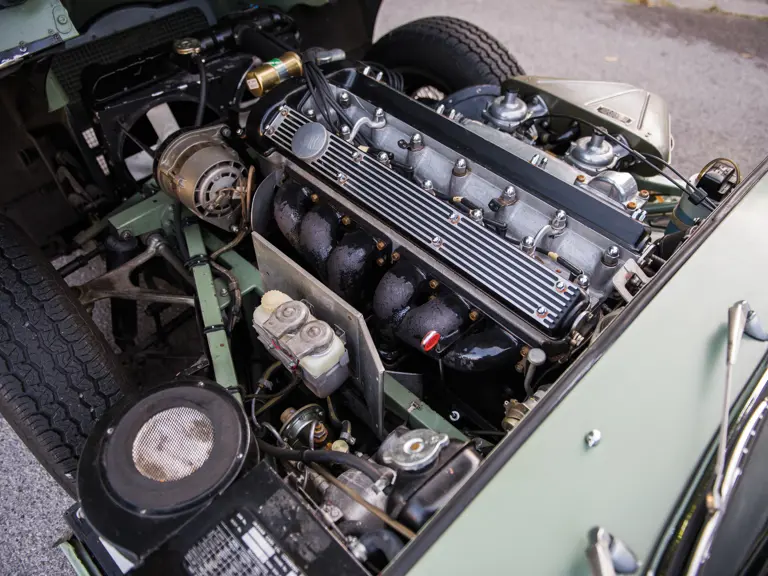


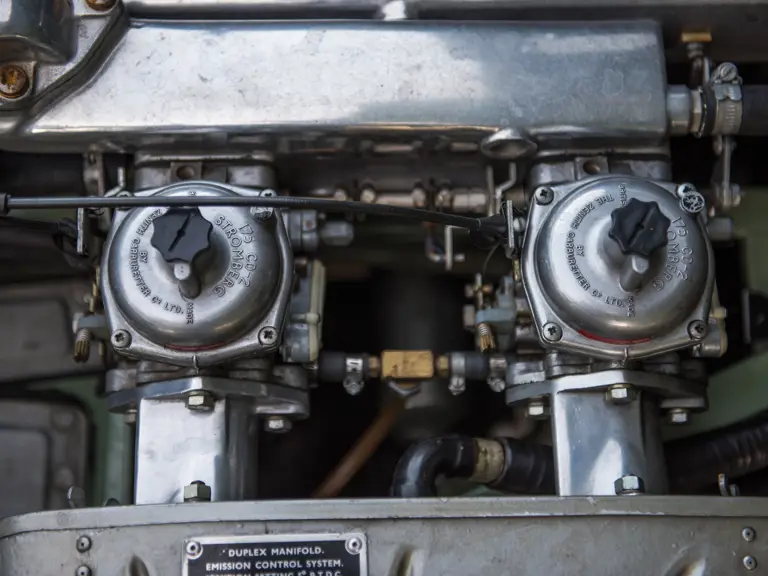
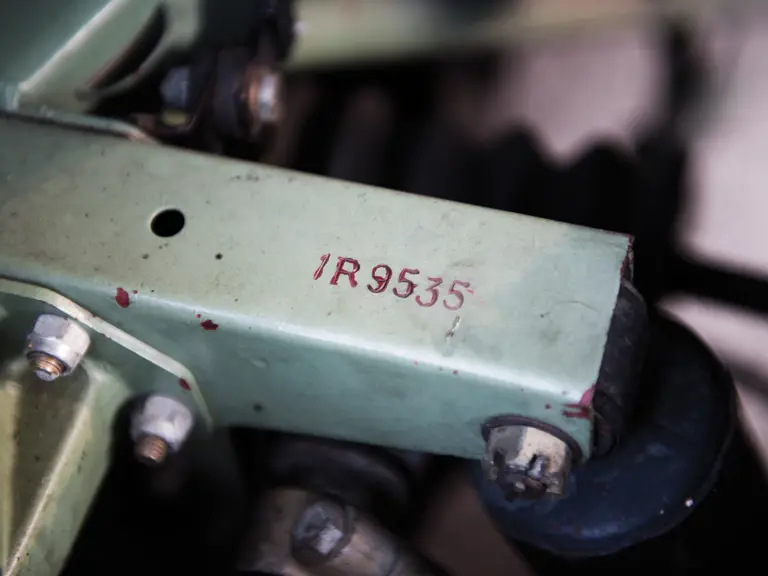
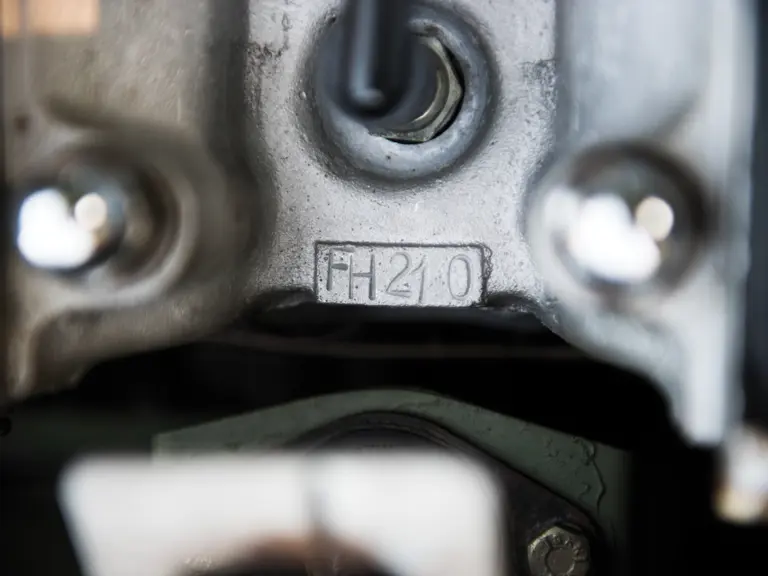
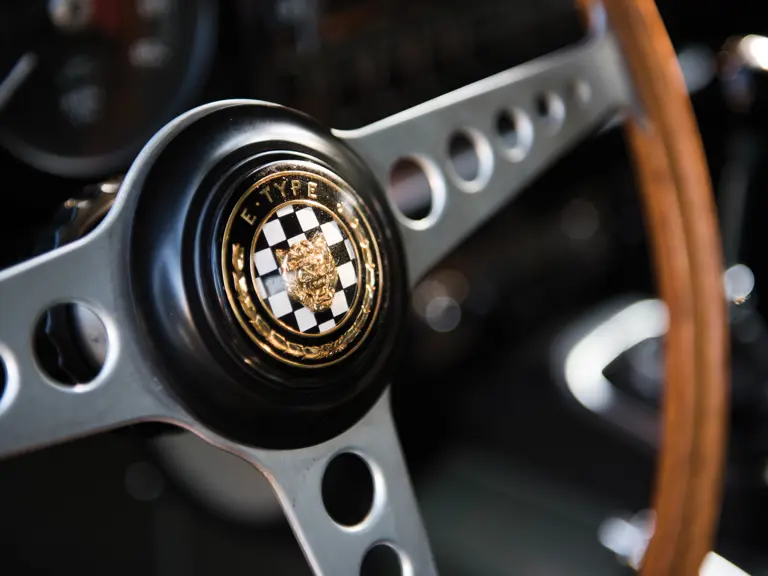

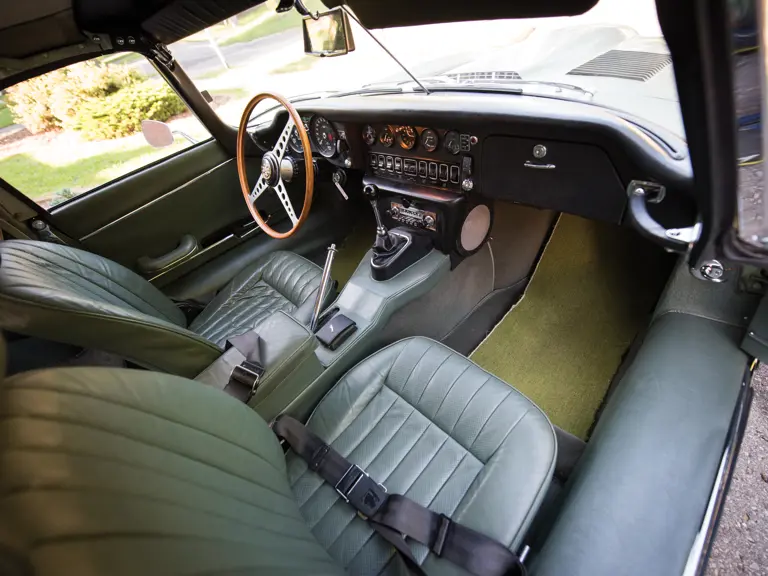

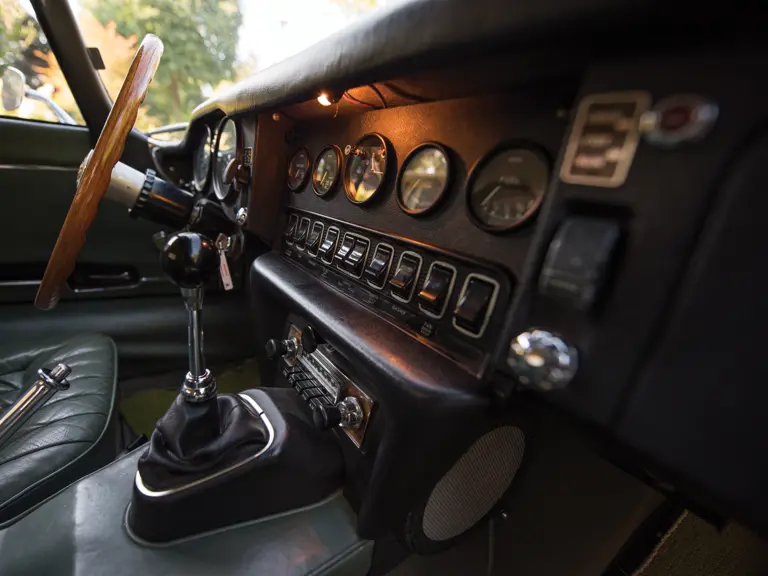
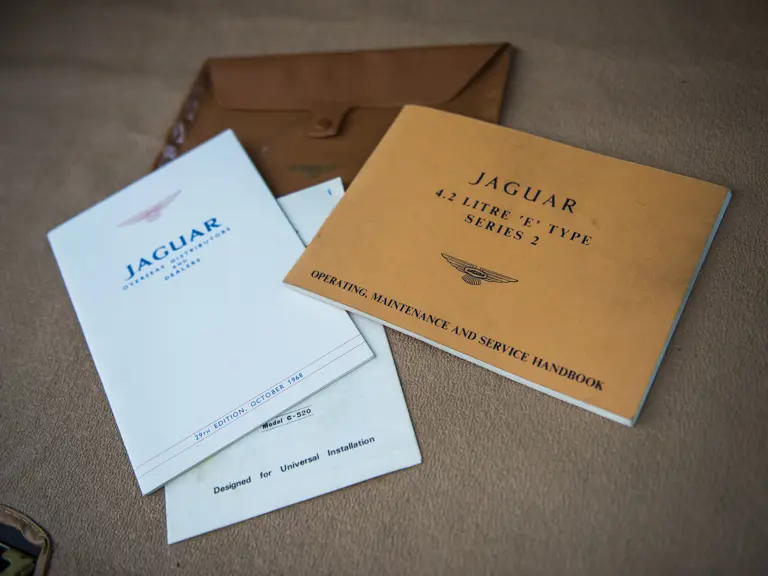
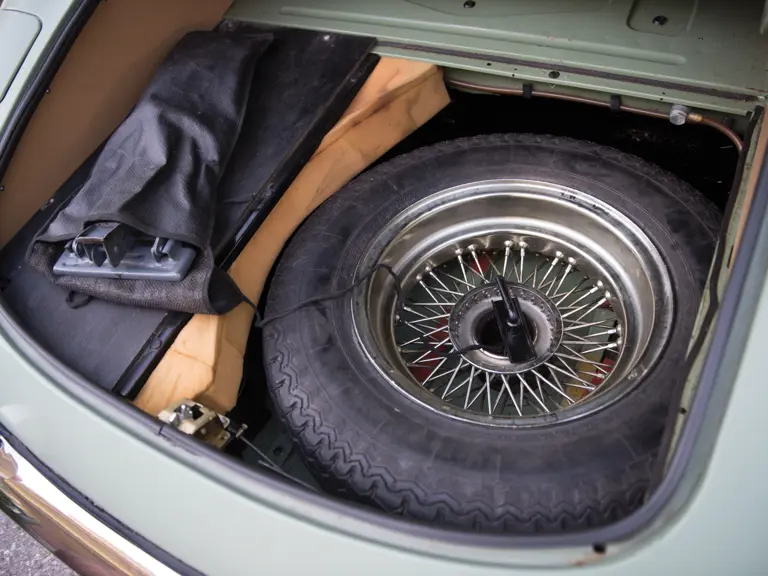
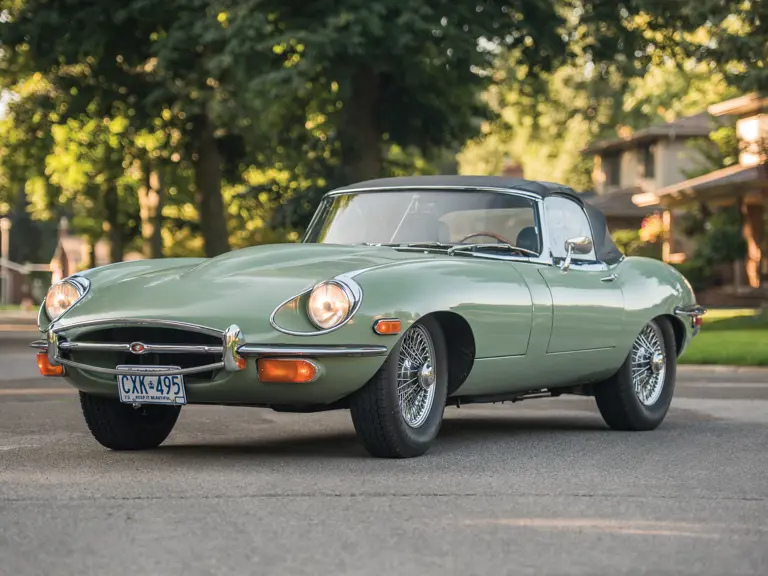
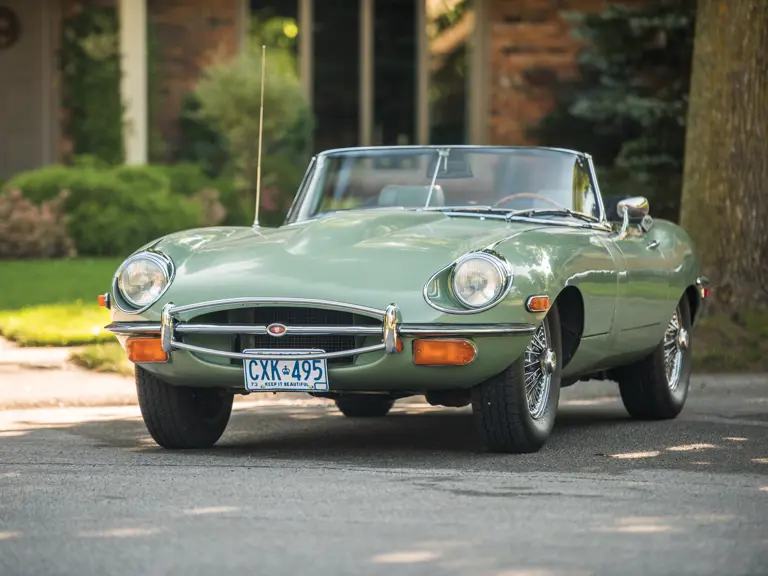
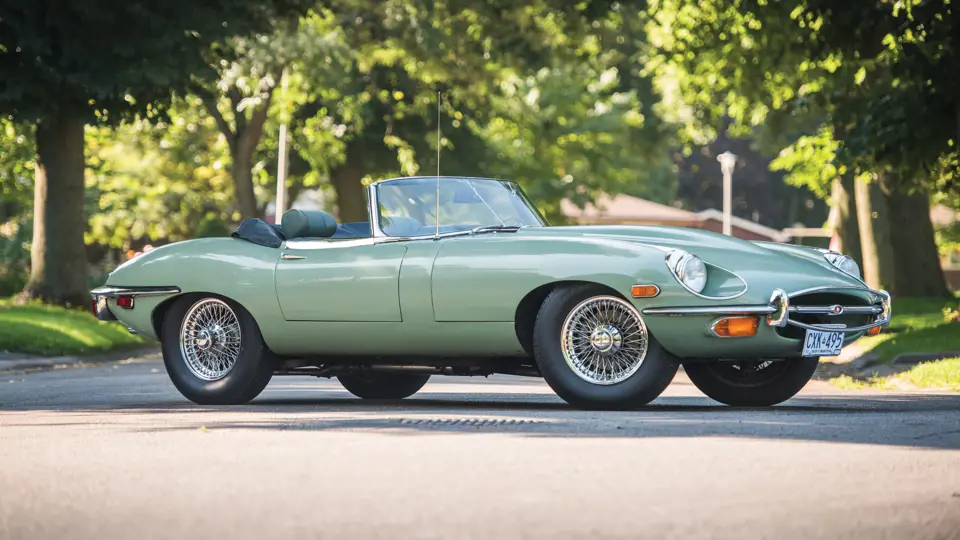
 | Hershey, Pennsylvania
| Hershey, Pennsylvania
